Gilbert accessories #561 through #588 are on page 1
#591 through #752A are on page 2
#755 through #762 are on this page
#766 through 785 are on page 4
#787 through #23601 are on page 5
#23602 through #23786 are on page 6
#23787 through #23830 are on page 7
Lionel accessories #2300 through #49807 are on page 7
#49808 through 49819 are on page 8
# 49820 and above are on page 9
Unless otherwise specified, the pictures on this page are from the collection of The Upstairs Train.
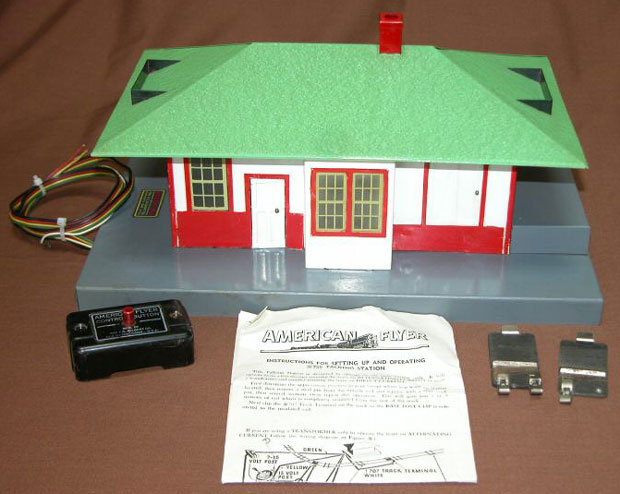
(Photo courtesy of George A. Mostoller.)
A somewhat harder to find version had a blue roof.
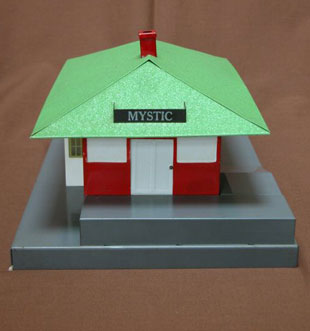
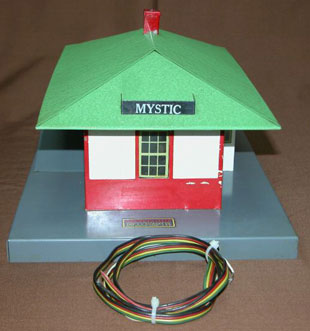

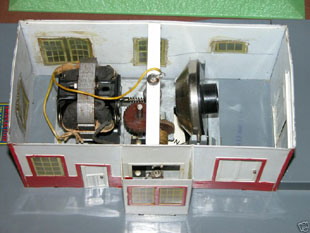

The record that holds the talking voices is mounted under the floor of the station.
(Photo courtesy of George A. Mostoller.)

The instructions explain how the record is mounted.
(Photo courtesy of George A. Mostoller.)
#755A Talking Station made in 1951 thru 1953. The #799 Talking Union Station replaced it in 1954.
It looks and sounds like the #755 above, but the 755A had a built-in Lockout Eliminator
so the train wouldn't back out of the station after the record played.
With the 755, you had to lock the engine's e-unit in forward mode
if you were going to stop the train at the station.
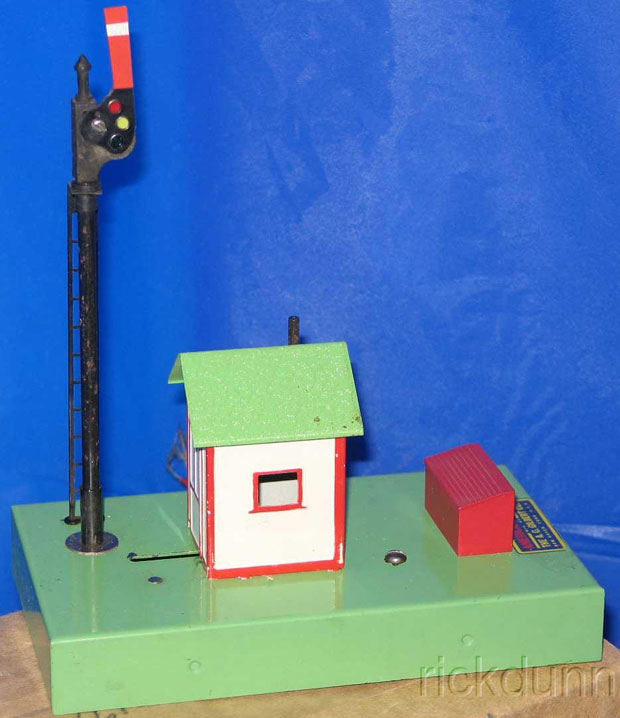
(Photo courtesy of Rick Dunn.)
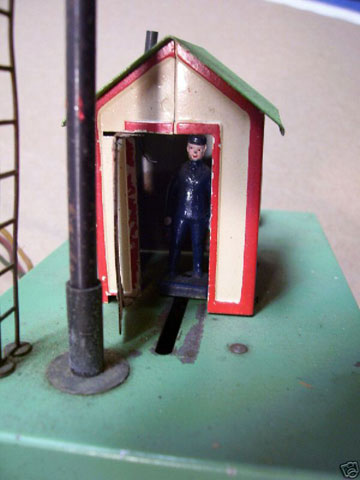
Push the button and he comes out.
In addition, the semaphore changes to red and the train stops.
When you release the button,
the semaphore changes to green,
the train proceeds, and
Sam returns to his shack.
(Photo courtesy of Douglas Weronick.)
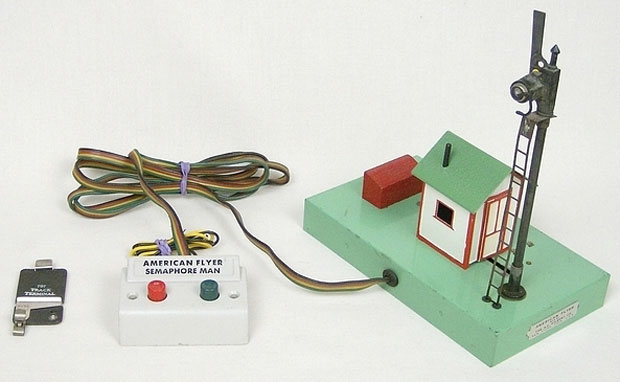
(Photo courtesy of Jae Eisele.)
Like other operating accessories of the time, the A indicates a design change to improve operation.
#758A looks like the #758 but it came with two button control so you don't have to hold the button down.
The red button stops the train and brings Sam out; the green button sends Sam back and starts the train.
In addition,.the 758A had a built-in Lockout Eliminator so the train wouldn't change directions
when it started up again. With the #758, you had to lock the engine's e-unit in forward mode
if you were going to stop the train at the semaphore.
To take advantage of this new feature, you connect the #707 Track Terminal (included) to the
Fahnstock clip connector on the base behind the toolbox, rather than to the rainbow wire.
By the way, the Fahnstock clip connector is an easy way to distinguish #758A from #758.

(Photo courtesy of Jae Eisele.)
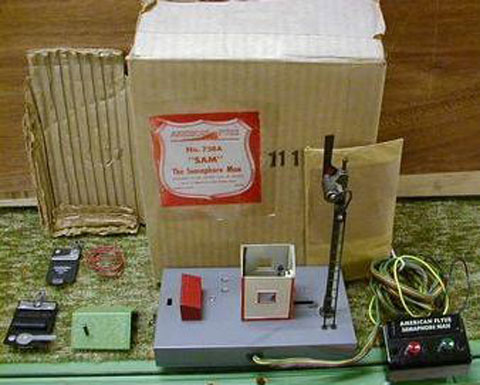
Look closely and you'll see the Fahnstock clip connector on the left, behind the toolbox.
It didn't come with the #696 Track Trip shown in this picture,
but you can wire a Track Trip parallel to the red button to stop the train, and
a Track Trip parallel to the green button to start it up again.
(Photo courtesy of an anonymous donor.)

(Photo courtesy of an anonymous donor.)
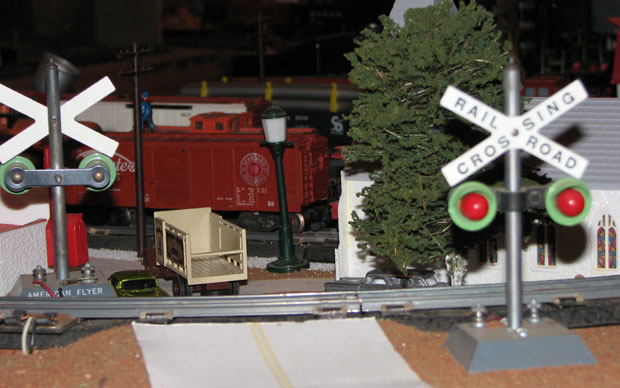


(Photo courtesy of an anonymous donor.)

Hence the name 2-in-1 and the two button control.
(Photo courtesy of an anonymous donor.)
Show me the rest of the Operating Accessories.
It takes time and money to maintain a website like this. If this site is interesting and helpful to you, please contribute financially to its ongoing success. You may send a contribution via PayPal using theupstairstrain@yahoo.com as the payee. Both credit card and direct transfers would be greatly appreciated. Thank you very much.
If you or your friends have some American Flyer trains and would like them to go to a nice home where they'll be loved and cared for, this is the place! Email me: theupstairstrain@yahoo.com. See my Wish List for the items I need most. Thank you very much.
On the other side of the coin, I post pictures from time to time on my For Sale page of surplus items I have for sale.
The books I am using for reference are listed in the Bibliography page. All the writing and all the pictures on this website are, however, my own, except where cited. No copyrighted materials have been included and all pictures provided by others are used by permission.
Now show me:
Engines Passenger Cars
Operating Accessories Buildings Bridges & Trestles Landscape People
Pictures Needed Useful Links For Sale Wish List Bibliography The Upstairs Train